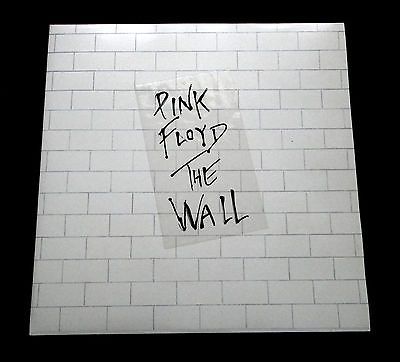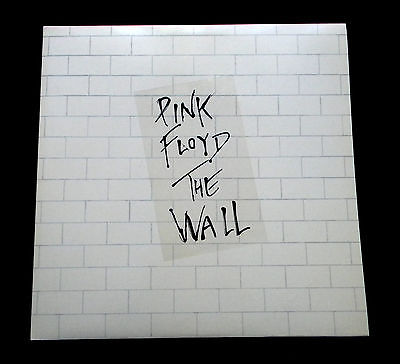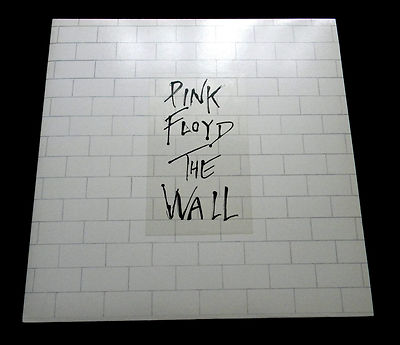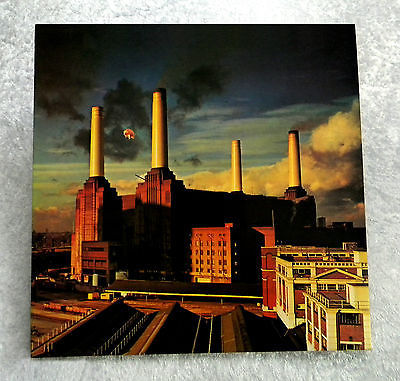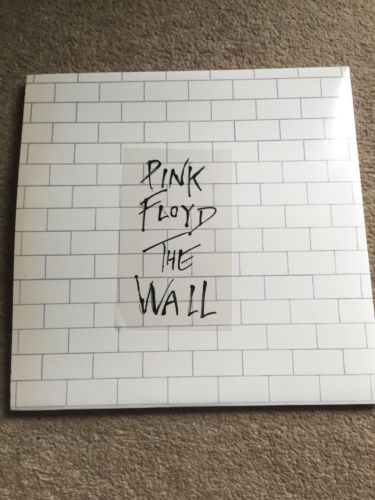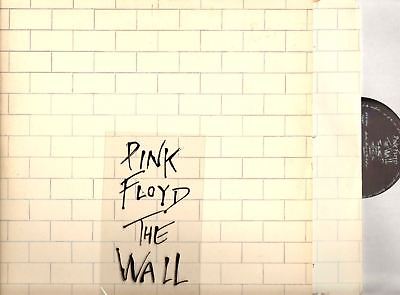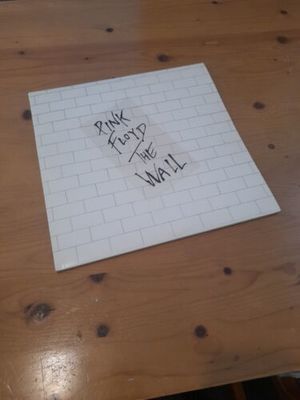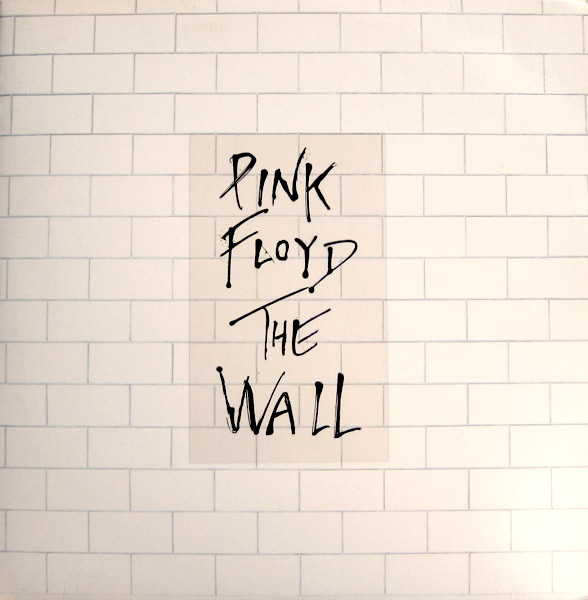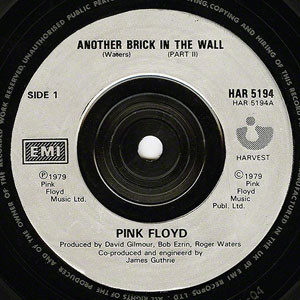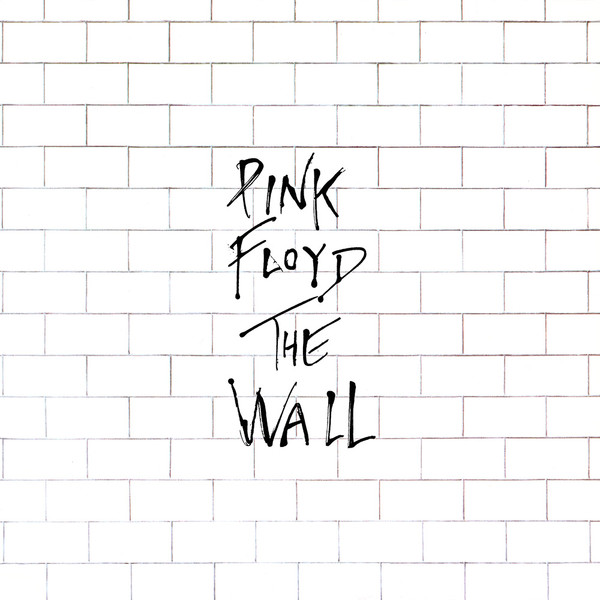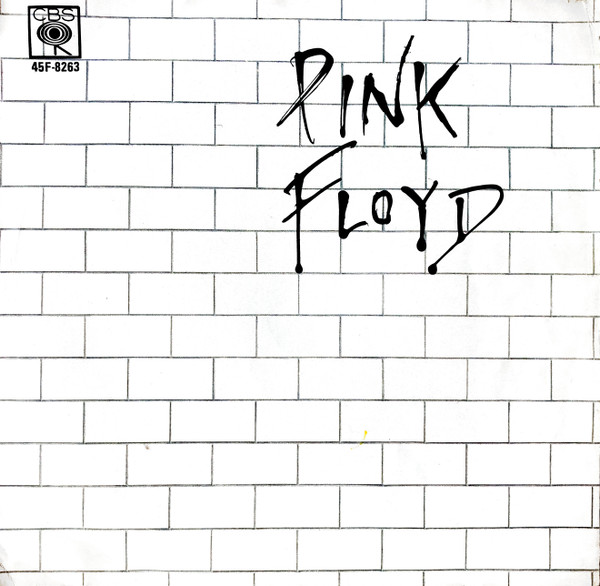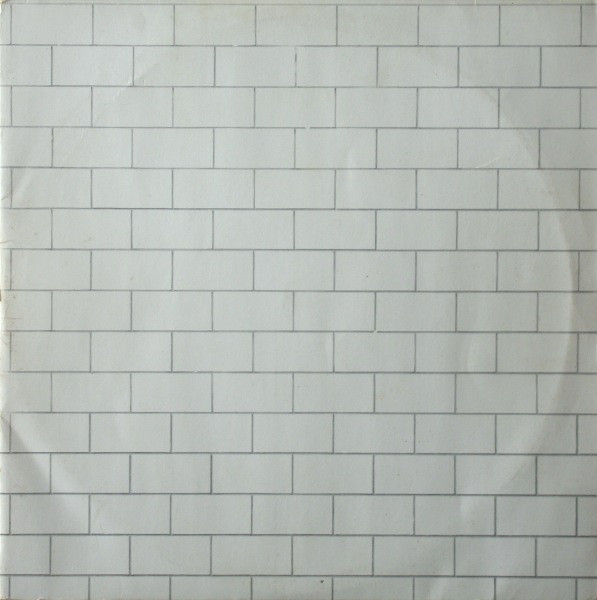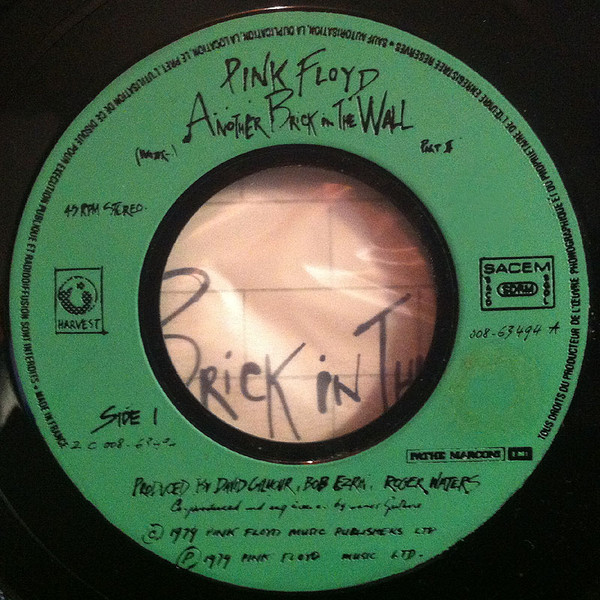Item Description
Hello? Is there anybody in there? Just nod if you can hear me.
Is there anyone at home? Come on, now, I hear you re feeling down.
Well I can ease your pain, And get you on your feet again.
Relax.
I need some information first, Just the basic facts, Can you show me where it hurts? There is no pain you are receding, A distant ship, smoke on the horizon.
You are only coming through in waves.
Your lips move, but I can t hear what you re saying.
When I was a child I had a fever, My hands felt just like two balloons.
Now I ve got that feeling once again, I can t explain, you would not understand, This is not how I am.
I have become comfortably numb.
I have become comfortably numb.
Okay.
Just a little pin prick.
There ll be no more high, But you may feel a little sick.
Can you stand up? I do believe its working.....Good.
That ll keep you going through the show, Come on, it s time to go.
There is no pain, you are receding, A distant ship, smoke on the horizon.
You are only coming through in waves.
Your lips move, but I can t hear what you re saying.
When I was a child, I caught a fleeting glimpse, Out of the corner of my eye, I turned to look, but it was gone, I cannot put my finger on it now, The child is grown, The dream is gone, I have become comfortably numb.
PINK FLOYD: The Wall DOUBLE LP, THE VERY FIRST UK PRESSING, 30th NOVEMBER, 1979.
Like the majority of authentic unplayed records in day of issue inner sleeves covers, this very first pressing of The Wall was purpose bought not to play, then stored absolutely perfectly insde a plastic outer sleeve.
Preserving all the exclusive items of the very first UK editions superbly, including the rarest of all UK Wall inner sleeves, these very first of the first have a unique and rare feature I will detail shortly.
LIKE THE RECORDS, THE GATEFOLD COVER AND THE PAIR OF CARDBOARD LYRICS INNER SLEEVES, HAVE UNIQUE VERY FIRST ISSUE FEATURES.
UNPLAYED IS RARE ENOUGH, BUT THE COVER IS STILL INSIDE SHRINK WRAPPING.
Everything connected to this first pressing of The Wall, is still in November, 1979, Record Shop Condition , the gatefold cover is still in the rare original shrink wrapping.
Under the shrink wrapping on the front top right corner, is the original HMV price sticker, a 1979 type, a small rectangle printed in purple, black and white with The HMV Shop 6.95 Even though the records were never removed or played, there was still the matter of the impact shrink wrapping can and often does have over such a long period.
It does literally shrink, tightening up and constricting with a steel like grip on covers, turning corners and damaging the spine, with the records pressed up against the cardboard, they are at risk of warping.
It was only applied for initial distribution displaying / storing in record shops before being sold, it would normally be removed when first purchased.
To survive nearly 40 years is very rare and the shrink wrapping in this case, was met with a first issue really solid, heavy duty cardboard gatefold cover, supported inside with two thick cardboard lyric inner sleeves and two records.
The shrink wrapping was never sealed but finished on the opening edges, the force was indeed unable to affect the cover, the seams partially parted and as it contracted it just rolled inwards away from the opening.
An effect I regularly see and that means no negative effects, provided the long term storage was correctly made, which this most certainly was, it was stored inside a plastic outer plastic sleeve, so regardless of the shrink wrapping parting on the seams, the outside of the gatefold cover is still the precise off-white of 39 years ago.
An absolutely perfect cover and the gatefold has never been opened, it would be quite easy to remove the shrink wrapping for a picture of the inside panels, but I would not risk splitting the shrink wrapping.
Please see my pictures for the incredible condition of all the items, I am rather proud to offer this very special, very first pressing of The Wall.
I now have a mountain of pressing details and the identification of the unique features, wonderful to have this ultimate condition example to take them from....then I will be very carefully playing both records and possibly still have the energy to describe every track, or at least the majority.
ILLUSTRATED HARVEST LABELS: SHDW 411.
INDEXING IN THE RUN-OUT GROOVES, EMI STAMPING CODES, MAITRIX MASTERING LOGO S FOR BOTH RECORDS MACHINE STAMPED MAITRIX AT 6 O CLOCK: Record 1: SHSP 4111 A - 2U / SHSP 4111 B - 2U Record 2: SHSP 4112 B - 1U / SHSP 4112 B - 2U A typical mixture of the earliest digit ending s before the U letter over the four Sides with -1U -2U only, amazing to not to have even reached -3U yet.
I will give more specific info after the stamping codes because they are directly in unison with the maitrix configurations.
EMI S STAMPING CODES AT 3 O CLOCK: IN LATE 1979, EMI S STAMPING CODES WERE STILL AT 3 9 O CLOCK POSITIONS IN THE RUN-OUT GROOVES, ONLY JUST THOUGH, THEY WERE BEING USED FOR THE FINAL TIME.
SO ONLY AUTHENTIC FIRST PRESSINGS STILL HAD THE SAME FORMAT FOUND ON EMI PRESSED 1960 s 1970 s RECORDS.
STAMPING CODES FOR RECORD 1: Side 1: AR 2 Side 2: O 2 STAMPING CODES FOR RECORD 2: Side 3: OO 1 Side 4: OT 2 The letters at 3 o clock on both sides of Record 2 were faintly stamped, the above are my interpretations but still accurate.
The two 1 2 mother digits over all four sides were perfectly and clearly stamped at 9 o clock in the run-out grooves.
As indicated by a 1 digit on one side, sourced from a very first mother, the other three sides were from 2nd mothers.
This pair of records were made early among the pre-release genuine first pressings, EMI stamping codes relating to the sequence of individual record s placement in the manufacturing, cannot be taken in isolation for massive selling albums like The Wall.
Or for album titles with re-issues made comparatively close to the original release dates, especially when you move into another decade when design alterations affected indexing methods.
Briefly, - 1U , - 2U - 3U firmly belong to the earliest records made, typical EMI indexing for huge selling albums, the lowest side is the - 1U and the other three sides end with, - 2U Perfectly normal and exceptionally low for such a massive scale of vinyl production, fully anticipated for a No.1 album and not just a single studio album this time for Pink Floyd, but their first ever double, which had to lead to the mixture and positively a UK, 1979 very first pressing.
FIRST PRESSING MASTERING DETAILS: RECORD 1: SIDE 1: TML - M The Mastering Lab with - M signifying, Master SIDE 2: TML - X The Mastering Lab, with - X signifying Extra RECORD 2: SIDE 3: TML - M The Mastering Lab with - M signifying, Master SIDE 4: TML - M The Mastering Lab with - M signifying, Master LIKE THE BEATLES 1968 White Album AS A GENUINE FIRST PRESSING, WITH VINYL PRINTED ITEMS BEING LIBERALLY SWITCHED AROUND FOR THE Wall AS WELL NOW, THE ABOVE WAS JUST THE STARTING POINT TO QUALIFY AS A 1979 FIRST PRESSING, THE ABOVE MACHINE STAMPED MAITRIX AND STAMPING CODES ARE OF COURSE DEFINITIVE AT THIS INITIAL INDEXING STAGE....BUT TO STILL BE HOW THEY LEFT EMI S PRESSING PLANT IN NOVEMBER, 1979, NOW THEY HAVE TO BE TAKEN IN CONJUNCTION WITH THE PRINTED DETAILED ITEMS BELOW.
THEY ARE ALL EXCLUSIVE TO RARE FIRST UK ISSUES, ONLY.
Rare concerns the condition of all the individual items for such a huge selling album, average condition scratched and damaged records, in stained, torn, lyric inner sleeves and gatefold covers, are not rare, but average condition of first edition items.
FURTHER DETAILS ABOUT THE ACTUAL FORMAT OF THE STAMPING CONFIGURATIONS AND THEIR RELEVANCE, WILL BE FULLY EXPLAINED IN THE MAIN DESCRIPTION, WHERE I WILL FULLY DETAIL THE UNIQUENESS OF THE GATEFOLD COVER AND THE LYRIC INNER SLEEVES.
BOTH UNIQUE THICK CARD, LYRICS INNER SLEEVES HAVE NEVER BEEN USED, HARDLY UNAGED AND UNSPLIT WITH PERFECTLY CRISP, SHARP EDGED, TOP OPENINGS.
ALL TO DETAIL ARE NATURALLY FORMED RECORD IMPRESSIONS, NOTHING COULD COULD NOT PREVENT RECORD IMPRESSIONS OR STANDING PRESSURE IN THE MIDDLE OF THE BOTTOM RIMS.
LIKE IN THE WORLD OF ANTIQUES, SUCH MATTERS SHOULD BE PRESENT TO BE AUTHENTIC AND UNLIKE ANTIQUES, THEY DO NOT HAVE TO BE OR TAKE TAKE 100 YEARS, RECORD IMPRESSIONS BEGAN THE DAY THEY WERE INSERTED.
THERE ARE NO SPLITS TO THE CENTRAL CONTACT POSITIONS ON THE SIDES OR BOTTOM RIMS FROM THE RECORD EDGES, JUST EXPECTED INDENTATIONS FROM STANDING.
I cannot believe The Wall will be 40 years of age next year, these very first inner sleeves without the extra catalogue numbers are very rare.
I will discuss that in great detail below, they did not have a sheen top surface and there had to be some form of ageing due to the white background, both have absolutely minimal signs of ageing and have never been handled or used.
I took a picture with the immediately following inner sleeves layered on top to show the difference, the second inner sleeve were also made before the release date, hence the expression, the very first pressing is accurately applied here.
GRADED AS A PAIR, IN UNUSED MINT- CONDITION.
EXCLUSIVE UK VERY FIRST ISSUE GATEFOLD COVER, WITH THE PRESS ON CLEAR PLASTIC OBLONG ALBUM TITLE PRINTED IN BLACK WITH Pink Floyd - The Wall .
Obviously that is underneath the shrink wrapping, that and and the cover is brand new condition, the shrink wrapping has been described in great detail.
No blemishes or wear to describe, only the shrink wrapping has effects of the passage of time but it is still 100 clear and every detail of the outside can be seen, this pair of records were never played, and ever since November, 1979, stored in a plastic outer sleeve.
I NEVER GRADE SHRINK WRAPPED COVERS THAT ARE STILL LITERALLY LIKE BRAND NEW.
ALL FOUR LABELS ARE IN PRISTINE CONDITION, UNUSED MEANS UNSTAINED ON THE WHITE SECTIONS AND WITHOUT ANY SPINDLE ALIGNMENT TRACES.
ALL FOUR SIDES OF THE RECORDS ARE ALSO IN IMMACULATE CONDITION, DEEPLY GLOSSY WITHOUT ANY MARKS, EVEN ANY HANDLING TRACES ARE SO CLOSE TO BEING INVISIBLE, I HAVE NO INTENTION OF GOING DOWN THAT ROAD.
WITHOUT ANY DOUBT, BOTH RECORDS ARE IN UNPLAYED, MINT CONDITION.
RECORD 1, SIDE 1 In The Flesh? Roger Waters The Thin Ice Dave Gilmour / Roger Waters Another Brick In The Wall, Part 1 Roger Waters The Happiest Days Of Our Lives Roger Waters Another Brick in the Wall, Part 2 Dave Gilmour / Roger Waters Mother Dave Gilmour / Roger Waters RECORD 1, SIDE 3 Goodbye Blue Sky Dave Gilmour Empty Spaces Roger Waters Young Lust Dave Gilmour / Roger Waters One Of My Turns Roger Waters Don t Leave Me Now Roger Waters Another Brick In The Wall, Part 3 Roger Waters Goodbye Cruel World Roger Waters RECORD 2, SIDE 3 Hey You Dave Gilmour / Roger Waters Is There Anybody Out There? Roger Waters Nobody Home Roger Waters Vera Roger Waters Bring The Boys Back Home Roger Waters Comfortably Numb Dave Gilmour / Roger Waters RECORD 2, SIDE 4 The Show Must Go On Dave Gilmour In The Flesh Roger Waters Run Like Hell Dave Gilmour / Roger Waters Waiting For The Worms Dave Gilmour / Roger Waters Stop Roger Waters The Trial Roger Waters Outside The Wall Roger Waters Roger Waters - vocals, guitars, synthesiser sound effects David Gilmour - guitars, vocals, synthesisers, clavinet sound effects Richard Wright - organ, piano, Rhodes electric piano synthesisers Nick Mason - percussion Backing Vocals Bruce Johnston Toni Tennille Joe Chemay Jon Joyce Islington Green School - children s choir Michael Kamen Bob Ezrin - orchestral arrangements Recorded At Superbear Studio, France, CBS Studios in New York, Cherokee Studios Producers Workshop in Los Angeles.
The eleven month long complex recording s, January to November 1979, began in France and finished in the USA.
Produced By Bob Ezrin, David Gilmour, James Guthrie Roger Waters Ten years after the first Pink Floyd double album Ummugumma, in 1979 they released the first ever studio recorded double album, The Wall.
Ten exceptionally successful years, twelve since the 1967 Syd Barrett era, but in spite of such healthy album sales, which of course included the Dark Side Of The Moon phenomenon, I doubt if it s widely known that Pink Floyd were in terrible financial trouble just after the first recording sessions for The Wall in February,1979.
All their massive earning s were under the control of an investment company, Norton Warburg , who s collapse left the band teetering on the brink.
I can t believe the hatred and venom thrown at Roger Waters today by the ignorant who really believe the misconception The Wall was some kind of egotistical solo venture and he caused deep rifts that fragmented the band.
Without Roger Waters composing genius emerging in full when creating The Wall , who knows what the consequences would have been, even then all the advance promotional work, the initial lengthy USA touring and comparatively very limited five UK dates, all became even further financial losses, Pink Floyd were on the brink of becoming bankrupt.
It was a reality in the music business, Pink Floyd s fellow Harvest label artist and best friend, Roy Harper, had only recently been made bankrupt and he lost his home.
Everything now hung on The Wall being a huge success, sustaining interest in any double concept album, was moving into an area where so many single album masterpieces had become commercial disasters.
Plus this was the period when rock s dinosaurs were apparently about to become extinct, this was issued in the very heart of the Punk dominated era, as usual, cream rose to the top.
The 1970 s decade had seen the band survive all the many ever changing trends and fashions Britain indulged in, from Glam Rock to Punk.
All their LP s had loosely connected themes, since their earliest science fiction derived spaceflight fantasies, during that 1967 - 1968 Syd Barrett period.
None had been as comprehensively explored in such depth as The Wall was though, issuing a double album had become essential to contain Roger Waters richest ever vein of songwriting, he wrote almost the whole album himself.
By 1979 it was no longer just 1960 s and 70 s Pink Floyd converts listening to their amazing music, they had constantly been attracting new listeners from an older age group.
They had done much more than just survive the last thirteen years in 1979, the band now had a fresh younger generation connecting to the band since hearing something they immediately identified with, Hey teacher, leave those kids alone blasting out from radios.
Comparing individuals to being treated as just another brick in the wall, struck a chord with young old alike, you did not need to still be at school to identify with losing your individuality and dreams.
If given the choice I would rather continue discussing Pink Floyd s extraordinary musical genius throughout every decade of the 20th century, but I will have to spend a while over the complex details of UK first pressing of The Wall.
An important thing to bear in mind is the release was on the last day of November,1979, virtually a December release.
By the 8th, it was at the peak chart position in the UK, No.3, which meant a mind boggling volume was bought in the first seven days, every one of them was a first pressing/first edition and all the websites in the world cannot challenge or question a fact as solid and verifiable as that.
For colossal selling albums like The Wall , they need to be and can be traced all the way back to pre-release first pressings, a No.3 album in late 1979 and then proceeded to spend an incredible 46 weeks in the UK charts So nearly a year after the first release, constant re-pressings were made late into 1980.
Like the Beatles huge selling records, EMI methodically indexed every individual one and that guaranteed the sound quality never dipped.
Websites create false scenarios, they state only records made at the very beginning of that massive manufacturing were the only first pressing, unbelievable ignorance, because there had to be a middle section and then the final pre-release records were made.
The indexing clearly showed how the Beatles and Pink Floyd records fitted into the mountain of records produced, they were all distributed to record shops at random and bought at random.
The definition of any first edition/pressing is it was available to buy on the release date, that simple and that nothing else is the reality of buying freshly released records.
Yes, first issues will have unique features but they are not found in the indexing unless the format was changed....which happened to The Wall within 28 days or 4 weeks of being released.
I am discussing the pressings made and bought in late 1979 and their indexing , but that was only a part of the volume pressed after late 1979, there was another chart re-entry in 1982 and yet again in 1990.
I would love to only write, the very first pressings are easily identified because they have staggering sound quality and the first made stereo mix It would be much too easy though and unless the amazing sound has been fixed in your mind for the previous 39 years, it will take a little bit more than that.
Obviously EMI anticipated needing large numbers to meet the demand and pressed accordingly, enough to see them through until after the New Year of 1980, so I will concentrate only on records made before the 30th November,1979.
Some of the very first UK issues came sealed in shrink wrapping, that is a little known fact and the plastic title was placed underneath the shrink wrapping, the opposite of how stickers were stuck straight onto the shrink wrapping for the 1973 Dark Side and 1975 Wish You Were Here.
That was why all later issue plastic titles dropped off and consequently lost, originally only held in place by the tightly gripping, stretched out taut shrink wrapping.
This first pressing had a described plastic outer sleeves to protect the matt cardboard cover etc.
as ever I automatically re-sleeve the records into new plain white inner s, normally after taking the pictures the clear plastic title is placed inside one of the lyric inners, ready for packaging.
This time it was indeed like Wish You Were Here, well, not stuck on to the outside middle of the shrink wrapping, the shrink wrapping was applied over the clear PVC title, it has attached itself to the inside of the shrink wrapping.
it would of course peel off, but I am leaving everything exactly how I bought it.
Besides, that happens to the best and safest place for such a thin, floppy easily creased item, preventing losing it.
Incidentally, I was the first since November, 1979 to remove the pair of unsplit condition card lyric inner sleeves.
Both records remained unplayed and was the whole album was perfectly stored, until I came along to buy this fantastic condition first UK pressing.
I decided there and then to take one of my undetectable plays, I am dying to hear and describe the music, or at least a large proportion of the four sides.
First the differences between every single UK printed The Wall gatefold covers and inner sleeves, of the genuine very first made, to all that immediately followed these exclusive items.
One final word on the sheer volume of The Wall in the UK during the first half of the 1980 s decade before bar codes were introduced, Britain was swamped with Dutch imports that did look very close to the UK re-issues.
We were trading at record fairs in the 1980 s and EMI found it more economical to import the album from Holland, the inner sleeves have square corners, the maitrix is different and the labels will have, Made In Holland in tiny print.
Before any website or textbook attempts to deliver the ultimate and accurate pressing sequence between 1979 - 1985, they will need to make intensive purchases to determine the true picture.
I have been doing exactly that for decades and practice what I preach, like the Beatles million selling UK records,I openly say I still make new, previously unknown discoveries in 2018 Printed items for huge selling albums however, were constantly in a cycle of re-designing and however slight or subtle that was, since joining ebay I have detailed everything relevant and this cover and pair of lyric inner s have them all.
These very first gatefold covers were made from extra thick, heavier quality cardboard and the colour of the outside had more of a creamier white tone.
That was gradually lightened on every successive printing until it had reached the pure white colour of the bar code re-issues.
The construction itself was unique to these very first made, a single sheet of cardboard was folded back on itself so only one join was needed across the top of the whole of the inside of the gatefold cover only.
The next, and every single one of those multiple re-issue covers were made using an alternate design for gatefold covers, the outside was made and printed separately to the inside, and then the two individual sheets were glued together, which meant two joins were needed at the top and the bottom edges via an internal cardboard flap.
I know this info will have people peering inside their covers, but unless you bought your copy in late 1979 you will find the two joins at the top and bottom, the inside of the first issue covers where the records are stored is white, unlike first issue lyrics inner sleeves, which are an untreated natural cardboard colour.
Inside the gatefold, the graffiti style printing between the bricks, does vary slightly to all later covers but that comes under the heading of too minor be of any real importance.
The text however is identical on all covers, I have seen the utter nonsense being spread over the internet and copied, the very first covers have the same text as every following cover, the info was taken from one of my old descriptions but copied in ignorance.
The colours of the scrawling handwriting vary, not the text or credits No matter what I write now will prevent the continuation of blatant mistakes, I m not one to dwell on the minutest variation that affects most printing, or waste time over something that does not exist with two stunning records waiting to be played for the first time in 39 years.
Like Led Zeppelin, everyone knew who Pink Floyd were and not only there no band pictures, the only credits were legally necessary inside the right hand panel.
Why people make up fictitious printing rarities , is usually to sell worn out damaged items, then the internet is a breeding ground for glaring errors and downright lies, buyers can soon check the real facts though.
The staggering power of the mastering produced sensational volume on the first pressings, printing is not exactly as interesting as The Wall from an unplayed first pressing Even so, I will give all specific details to the best of my knowledge and ability, this is Pink Floyd It was perfectly normal once any very first cover was made and the sales were well underway, for economics to take over and expenses to be cut, even the vinyl s thickness and weight was drastically reduced.
You will read nonsense about where the bricks actually started on first issue covers, in relationship to the bottom edges on the outside, but no two covers were ever assembled and glued in exactly the same position for single covers, for gatefold covers in one complete sheet, the folding was extremely difficult and variations were inevitable.
THE RARE, VERY FIRST The Wall LYRIC UK INNER SLEEVES.
Now onto the inner sleeves, they are top opening and made from thick cardboard with curved or rounded edges to avoid the corners snagging and creasing when returned to the cover.
So were the immediately following pressings though but the big differences on very first issues only, is found on the bottom right edges of Side 2 s lyrics of both individual inner s, per Records 1 and 2.
Only the UK s catalogue number was printed there for the genuine November,1979 bought covers, then from January,1980, EMI had these two other catalogue numbers added, OC-158 63410 was for Europe, and SHSP 411 was I believe for the USA.
Which now meant all the artwork could be out sent by EMI overseas to America and Europe, removing the need to change or over-print on those individual catalogue numbers, which itself is kind of ironic The lyrics inner sleeves lost their individuality in early 1980 and beyond, to become....
Another brick in the wall .
You couldn t make this up if you tried, in my pictures I have shown the single UK catalogue numbers in close up, underneath these first issue only sleeves, I placed the very next printed inner s that also had curved corners.
So the first and third overlapped inner sleeves are from this first pressing, it was nearly possible to exactly line up the bricks when laying the lyric inner sleeves side by side, on both sides for picture , anyway, the layered order of the four sleeves is Sleeve 1 Sides 1 2 tracks and lyrics is on top of the second printed, Sides 1 2 sleeve.
Sleeve 2 Sides 3 4 tracks and lyrics is on top of the second printed, Sides 3 4 sleeve.
I hesitate about naming the later pair re-issues because the added catalogue numbers happened during the manufacturing but they are distinctively different.
All you read today on ebay and internet websites was taken directly from my description from around 2002, two Pink Floyd websites had the good manners to ask my permission to duplicate the info but managed to misunderstand the inside album credits.
The ignorance about EMI s indexing will unfortunately never be fully understood about Beatles records, let alone Pink Floyd albums, so please do not send emails, I introduced all that is now being misquoted As I was saying, visually obvious changes were made only a few weeks after the release date and I am certain that happened when the printers and pressing plants returned to work after the Christmas break in the New Year of 1980.
The planning stage would have happened during the December when preparing for the next wave of records, covers and inner sleeves, you can physically see the changes and this is not speculation because of the very short time period involved.
The majority of the by far rarer first issues are split on all three sides, looking battered and torn, leading to sellers swopping them around for later issues, any inner sleeve with three catalogue numbers cannot possibly be from the first batches made in late 1979.
Sorry if this is going to cause disappointment to collector s looking at their own copy or bought on ebay as first issues , but that was how it was in 1979, if any cover inner details here does not match exactly, you will have a re-issue.
I cannot possibly give all the other variations that followed, except to say by the mid-1980 s, just before the introduction of bar codes, the mentioned Dutch pressed and printed imports were sold as standard in the UK.
Often now sold as UK originals , if you have missed seeing the non-UK maitrix and look carefully at the labels and inner sleeves, Made In Holland will be there in the very small print I just detailed.
That is about all the printed info for the first issue, now for the records, this is really very straight forward because EMI had not yet re-designed their maitrix configuration, they had remained unchanged since since the 60 s themselves, that was only a few weeks later and was about to be introduced in January,1980.
The records by 1979 standards, were heavyweight and deep grooved, very close to 1960 s vinyl, as seen by the very wide thick lip before the run-in grooves on the record s outside rims.
Every single first issue had the same 60 s style of raised machine stamping s in the run-out grooves, from now on the 1980 and re-issues up to mid-1981, would have the 3 o clock position s once coded letters for the pressing sequence, replaced by simply using actual digits for the order a record was manufactured in.
They became elongated and out of synch with the other stamping s and look different to the more solid 60 s raised style of stamping EMI always kept through the whole of the 1970 s decade.
Then in late 1982, EMI moved all the 3 o clock 9 o clock stamped digits to the 6 o clock position, they now appeared as extra digits after the maitrix.
This pair of first pressing records and their maitrix configurations, in particular EMI stamping s are a perfect example of the pre-altered format.
For UK first pressings, the maitrix endings were either, -1U / - 2U / - 3U on one side, with possible higher digits on the reverse sides but usually only one of the four sides had that.
I must add before joining ebay in 20O1, we sold more copies at record fairs than I could actually count.
Always in Mint of course, but it was was much closer to 1979 then, how things have changed now, the last copy I sold on ebay was at the beginning of this year.
We sold every possible variation and often over a weekend, three or four copies were sold, my knowledge was constantly being up dated, anyone who knew us from record fairs, they will remember my complete section of every Pink Floyd album...and a selection of choice unofficial LP s Different era s and different availability cannot last forever and now I am delighted to offer top condition Pink Floyd records when possible, but when I do they will be very special.
The Wall s many varying combinations per side of the two records, must have the above exclusive printed items to qualify as first pressings, this pair of records have one side with -1U , three sides with - 2U , nothing higher than - 3U is a very healthy selection that comply perfectly with authentic first pressings.
Record 1: SHSP 4111 A - 2U / SHSP 4111 B - 2U Record 2: SHSP 4112 A - 1U / SHSP 4112 B - 2U Another reason for stating these records were pressed before the November 1979 release date, one side has 1 digits in the run-out grooves at 9 o clock, the very first mother , the other three sides were from the second mothers.
Comply is the correct term because the comparison earlier to the White Album for EMI stamping codes alone, would fit a very first pressing with a low Limited Number on the front cover, the maitrix configuration in 1968 was different until 1970.
A look round ebay will always reveal White Album original numbered top opening covers, with later records without the Sold in The UK text, the changing of the records includes taking posters and four prints from later re-issues as well.
For The Wall unless everything have just described is together in the same package, there will have been, cover/lyric inner/record switching going on, or a re-issue from the decades that followed the last few weeks of the 1970 s decade.
The same happened at the end of the 1960 s decade and affected albums and singles released in late 1969, when multiple re-designing took place, which included Pink Floyd.
I have written all that without even mentioning the music, just as well I love Pink Floyd This much effort and time was for those who want to know if they are hearing and holding a first UK issue of one of the 1970 s and the twentieth century s greatest ever albums.
All four labels are in immaculate condition, without a single trace of spindle use, both records are unplayed, their beautiful visual appearances include the sound being that of Mint EMI first pressings.
I know the sound quality will be sheer perfection with the massive power, I play mostly 1960 s and 1970 s records all week and the volume mastered during 1979 was absolutely astounding.
It will be a real joy to hear The Wall in staggering sound and unspoilt by the excessive noise that plague these first issues.
I have written much needed first pressing info, it has been one year since I last located top condition like this, but I remember previous The Wall descriptions, once again I will have to see how this goes because I am not certain if I can write full track description for a double album of this magnitude.
I would have preferred to go straight to the music but I accept that for some records, pressing info and cover identification take prority, I will try my very best to include as much as physically possible, starting with the first record and just see where I end up.
Unplayed records might have minor static and I will include anything necessary but not the trivial.
The Wall is a really major listening experience from the opening seconds of, In The Flesh? , the very last track on Side 4, with those amazing lyrics from Outside The Wall Some stagger and fall, after all, it s not easy, banging your head against some bu er s wall.
One thing I can say for sure, by the time I have finished typing this lot out, my fingers will have become....
comfortably numb.
Record 1, Side 1, the run-in grooves have none of the usual crackles and clicks in that near minute before the music kicks in, only the slightest natural static in the near silent intro.
Amazing for unplayed, I m very happily naming this near silent before the explosion of massive power on the fantastic heavy instrumental beginning of In The Flesh? The few spaced apart notes for the intro have to be among the very quietest on any Pink Floyd album, this is absolutely stunningly clean.
Followed immediately by a dark, moody organ, electric guitar, bass and drums eruption on the long instrumental intro.
If anyone thought Pink Floyd might have started to mellow in late 1979, hearing the album opener In The Flesh? emphatically told you they had certainly not The stereo mix on these first pressings was the work of the whole band, heard in staggering true stereo with that 1960 s style total channel separation.
They really do kick up a storm with heavy duty playing and Dave delivers some really mean lead guitar, the volume here is simply colossal, all that pressing and printing stuff I just detailed pales alongside the awesome impact first pressings in this unbelievable condition give to the music.
That went missing on the re-issues, In The Flesh? is one of the very best examples of how mind blowing that impact is, I have played pressings from every country and from ever decade of UK issues and nothing has come even remotely close to this The sound itself is ultra sharp edged and even with my volume set ridiculously high there is still not a hint of distortion, including the massively loud bass guitar on In The Flesh? The best way I know to describe an EMI first pressing, is nothing ever made since is fit to mention in the same breath.
There is such stunning sound on the vocals, especially when that heavy guitar riff pulls back for the harmonised parts with, On With the Show.
The plane sound effects on the ending are in a devastating stereo mix, boosted by incredible volume as they roar and swoop between both of the speakers so realistically, you feel like ducking A baby cries, the very gentle piano intro to The Thin Ice is superbly clear of the normally annoying loud crackles found on the great The Thin Ice.
Dave Gilmour sings the lovely melody from the right speaker and Roger Waters takes the nearly spoken second verse, while the piano plays a slowed down late 1950 s rock and roll refrain.
The sound now really erupts as that powerful piece of music at the end takes off with Dave Gilmour in tremendous guitar genius mode.
For the first play in 39 years, any pressing related static will be long gone after several plays, I cannot possibly attempt a full description if I have to keep repeating the blatantly obvious.
This is a record and truly staggering sounding at that, now as smooth as silk into Another Brick in The Wall - Part One , taken at a much slower tempo for this first appearance on the album.
Stunning guitar from Dave, building dramatic tension while faint school playground voices filter through, the bass from Roger is magnificent here, once again, no irritating noise, the track fades into a very loud helicopter flying realistically between the speakers.
The crispness of the drums and bass guitar intro for The Happy Days Of Our Lives is stunning A track not mentioned on the inner sleeve but a great one all the same, the sound is just stunning as Another Brick In The Wall Part 2 is now played at the faster tempo.
There is no need to describe the album s best known and loved track, but there is a need to say how superb this first stereo mix is and how wonderful the sound quality is from a Mint first pressing, unplayed is unreal The very loud angry and intimidating shouting by the Scottish accented teacher at the kids, was a perfectly accurate portrait Ranting about, Not having your pudding, if you don t eat your meat , was enforced control even during the kids lunch break.
No doubt Roger Waters did have a grumpy and angry Scottish teacher at the Cambridge school both he and Syd Barrett attended.
Then the sounds of the playground are followed by a phone ringing, heard in pure sound without a hint of any pressing surface or needle sound.
The cleanness of the acoustic guitar and vocals only, intro to this track, was one I wanted to describe due to the exposure to needle noise Mother has.
As this has almost a folk beginning, crystal clear sound here could not be any better for audio perfection, the pressing was up there with EMI or Abbey Road s 1960 s finest vinyl.
I am rather fussy about how any of Pink Floyd record s sound, I am always fully prepared to be honestly critical of even an unplayed record, with my extremely high volume I can only give the highest possible praise to such perfect sound reproduction.
I cannot possibly include natural sounds of vinyl, because there has to be a limit to how far I m prepared to go for any record, especially for such an awesome sounding one like this.
When the full production cuts in, the stereo is sensational,with an organ and a piano in place of an electric lead guitar.
Dave plays just an acoustic guitar for the whole of Mother, the most exposed song for having noise from multiple played vinyl, but this is playing precisely like only a Mint record can, a perfectly pressed one at that.
No CD ever made could perform as cleanly as this, the toughest moments on the entire album outside of the opening of the four sides, to be this clean and clear is unreal, but EMI s audio standard was and can be as spectacular as this astounding first quarter of The Wall.
I urge all the websites hung up on low digits of mass produced EMI vinyl, to stop and listen to Mint vinyl, who knows, you might enjoy the true sound of analogue vinyl Record 1, Side 2 has near silent run-in grooves, the light static of an unplayed record and also during the non musical intro of birds chirping and the little girl speaking, before the music even begins for Goodbye Blue Sky .
An amazing sounding record, I am always being drawn into the absurdness of expecting any record to sound like a CD, occasionally they can and positively do, but often even on the same side of the same record there will variations on individual tracks.
I know exactly where that line has to be drawn and have successfully doing so for decades, ebay alone has involved 13 years of sound grading.
I aim at perfection, often vinyl will only ever be vinyl and there s no escaping fractional way off in the background only sounds over a double album, let alone on a single one.
I will emphasise again how I m playing this at excessive volume and the music itself remains as sharp as a knife with the most stunning audio definition.
I better concentrate on the job in hand, Goodbye Blue Sky has such a lovely gentle melody and Dave Gilmour sings this lead vocal, with superb vocal harmonies on a chorus of first only, ooh s.
A really delicate song and performance, the sound is magnificent, the guitar notes are heard in pin-point audio definition and so are the beautiful vocals.
As the track fades into a train station atmosphere and sound effects, the audio clarity here is breathtaking.
A train s rhythm is there in the theme to What Shall We Do Now, a heavily mood orientated song with Roger Waters singing it with real venom and an angry force in his voice.
Then the rhythm suddenly breaks into a smoother flowing tempo and the tensions are temporarily lifted, becoming even and uplifting, carrying that across into a tremendous Waters composition, Young Lust.
An organ and the blues lead guitar take this outstanding track right up to boiling point, Young Lust accurately describes this young lad s yearnings for his first sexual experiences, there is a note of desperation in these superbly written lyrics, during a chorus of young lust Oooooooh, I need a dirty woman, oooooooh, I need a dirty girl.
Great drumming by Nick Mason even on the fade-out, a phone rings and you hear a conversation and more connections are being made at the telephone exchange.
A movie soundtrack carries on with the phone call still in progress, Richard s keyboard s note very gradually rises in volume, throughout that whole lengthy and totally exposed to noise section, including a very quietly sung Waters first section, there was virtually no static or background surface sound.
One Of My Turns now explodes into full on power for an extremely loud, if short track, the extra volume on this Mint record does not have any distortion and the sheer clarity here is unbelievable.
An inspired Roger Waters lead vocal then smoothly linking to Richard Wright s keyboards for another short but sweet , Empty Spaces.
The final episode in the main themes that made this such a renowned album, Another Brick in The Wall Part 3 and even Syd Barrett himself could not have sung the, Don t leave me now lyric segment as well as Roger, the sounds here are just as spaced out as if Syd was singing With the fantastic production this track now ignites into such glorious sound textures, but still without the melody of Another Brick quite yet.
Incredible sound effects and spoken parts follow in an awesome stereo mix, without the slightest suggestion of any surface sound in the very quietest moments only.
The incredible impact when the door slams is just staggering Another Brick suddenly and very dramatically explodes, but now with almost psychedelic effects on the vocal and Dave Gilmour s guitar, then the very quiet bridge to a very short Goodbye Cruel World , is absolutely perfect, the actual sound certainly is razor sharp, great to hear this amazing part of the album without virtually any static.
Goodbye Cruel World has near suicidal lyrics and they are made even more chilling by Roger Waters bitingly intensive vocals being panned only in the left channel.
The Wall owed so much to Another Brick and to the immediately surrounding tracks, a case of the dazzling brilliance of creating a real masterpiece, by somehow connecting every second of every track together.
Knowing how many delicate tracks there are on Side Four and how most first pressings have excessive noise, I will deliberately keep Record 2, Side 3 as brief as possible.
I am really determined to give sound reports for the whole of this album.
Side 3 s initial run-in grooves are very close to naming silent, amazing for a first play, no surface sound during the acoustic and bass guitar s very quiet intro to the stunning Hey You.
For unspoilt and simply fantastic audio clarity, this second record is every bit as impressive as the first two sides were, they set near impossible mastering and pressing standards to follow, but a genuine unplayed Mint first pressing pair of records like this, now presents Record 2 exactly how it left EMI s pressing plant in 1979.
That is the definition of Mint and people can twist themselves into knots avoiding the plain truth, but records are about music and how the sound is generated, on that subject, those guitar notes have perfectly sharp, clear and immaculately clean sound on yet another tough track from original vinyl.
This is most certainly one of the cleanest first pressings you could hope to find in such astonishing visual and audio condition, once again there is not a hint of surface sound on the build up or the whole rest of Hey You , featuring Dave Gilmour s inspired vocals.
Then that beautiful melody is played with all the band, Dave opens up and fires out a fantastic solo on his electric guitar, inspired vocals? His guitar is just as awesome Roger Waters now takes over as the lead vocalist, injecting a feeling of real despair and his bass guitar on this track is unbelievable, almost taking over a lead guitarist s role.
Again, as loud as that bass is, there is no distortion, for such essential sound information I will keep this third side s description going in a continuous track by track basis, an old radio broadcast or a film soundtrack acts as the bridge into the short but rivetting Is There Anybody Out There, with those chilling vocals sung by Roger Waters in a dream like fashion.
Great use of reverb on the voice works with the horror movie sounds, there s a touch of Eugene on the backing, then an astonishingly clean link to the single acoustic guitar playing this wonderfully melodic instrumental, a haunting violin creates superb atmospherics.
This short track was one I definitely had in mind to include for it s audio properties, so I can report this being in simply stunning sound perfection.
Any faint occasional static during the first ever play, should not be highlighted and will soon be gone after a few plays .
We continue into the really sad, Nobody Home , I am including all of the sound effects like the radio, considering how exposed this part is, this is some pressing Moving ahead to an equally quiet backing on Vera, once more in the same fantastic sound quality, powerful but ultra clean , when it now explodes into massive volume, it s right off the scale during the highly emotive, Bring The Boys Back Home but still only the same crystal clear and undistorted audio.
I find it difficult to type while listening to this side, the raw emotions and sensational sound effects have an overwhelming feel and surely the most challenging section of The Wall.
Just when you think the limits are reached, the next track leaves you in a state of disbelief, how could any band take a further step into the very depth of human emotions? Well this was Pink Floyd at the very peak of musical genius and nothing I could write could possibly describe the sheer beauty of Comfortably Numb, but I will do my best.
Pulling away from the album temporarily, not easy but no way will I stop before I reach the final track now, as much as I have written so far, I will definitely cover the whole album this time, especially because here is that awesome Comfortably Numb, playing with all the immense power mastered into these first UK pressings.
I typed all the verses for the introductory lyrics, I was spoilt for choice on The Wall , I sincerely believe the lyrics for Comfortably Numb have not been given credit for such inspired writing.
Not just the lyrics either, the melody and production here created an incredible classic of a Pink Floyd track, with Dave s guitar solo as searing, inspired blues.
With the band right there up alongside him, for me it s where Pink Floyd came in during the 1960 s, vested in psychedelia, but at this same highest level of musical inspiration, yet another link in the chain begun with Arnold Layne in 1967.
I know how many Pink Floyd fans of their earlier recordings reject their music from this period and later, that in my humble opinion, is a terrible mistake.
You really do need to settle down and listen to this staggering album and then discover the positive connection to 1967 - 1972 is found right here on The Wall.
I had better leave this subject and move onto Side 4, Comfortably Numb features Pink Floyd inspired out of their skins, heard here in simply stunning audio perfection.
Maybe it s the sheer intensity, complexity of the album and the cutting vocals, but by now I feel like have been listening to ten individual albums, there is still one whole side left and what an extraordinary Side Pink Floyd were just sensational in 1979.
Record 2, Side 4 contains one of my favourite album tracks, the deeply beautiful The Show Must Go On, the way it sequences into In The Flesh was a defining moment in rock history, fittingly released just before the 70 s decade faded away into the sunset.
It would a long three years before we would hear another new Pink Floyd album, The Wall was an all encompassing double album and able to sustain such a long period before The Final Cut in 1983.
The side s run-in grooves are totally silent, so the great intro is supremely clean clear of any irritants.
The intro is just glorious with simply stunning vocal harmonies being sung as ah s and ooh s in breathtaking beauty.
This wonderful part is up there with the Brian Wilson/Beach Boys standard of vocal excellence, so are the mind blowing vocal arrangements.
The sound is just stunning audio perfection, words are failing me to do justice to such pristine, overwhelming sound, these UK first pressings were indeed mastered in colossal volume, the track is wide open to the excessive noise found on most copies from any of the following decade s pressings.
This has a late 1960 s - 1970 s sound and the 1980 s decade never captured the senses affecting mix, as created by Pink Floyd in 1979, I can only repeat how this amazing track is sheer perfection for that sound and massive impact.
Dave Gilmour s lead vocal is in staggering audio clarity but those fantastic vocal harmonies stand out for their fantastic power and razor sharp edge.
Now the amazing moment, In The Flesh makes an equally powerful presence felt as the main riff is pounded out with a really mean aggression, the second airing and now without the question mark at the end of the song s title, they also take the opportunity to expand on The Show Must Go On, with Roger Waters singing lead vocals, performed flat out as if they were on a stage, as the lyrics refer to.
After a grand final or an encore finish to a concert, with the audience s sounds very closely overlapped by Dave Gilmour s guitar only, very like how he played on Welcome To the Machine on the 1975 Wish you Were Here LP.
They keep up that level of intensity, as a blistering Run Like Hell begins and produces music as heavy as anything they had ever recorded in a studio, with the keyboards trading licks with the guitar, this was like turning the clock back to any of their late 60 s tracks.
Nick s drum s sound just amazing here, keeping up an incessant driving rhythm and with the bass guitar also at a fantastic volume level, this is Pink Floyd at their most inspired and their most potent as a rock band.
They more than survived an old dinosaurs disrespectable taunt from the British Punk contingent, they came storming in with music to flatten walls, not just sing about them As an old 1960 s Pink Floyd fan, I remember well the sense of pride I felt in 1979 when I first heard The Wall, I was also buying Punk records from 1976, but I found insults aimed at the established artists unnecessary, without innovative 60 s bands like Pink Floyd, Punk would never have happened.
Representing North America / Canada, Neil Young was another old dinosaur who refused to quietly disappear and he also rocked as hard as Pink Floyd and reminded the younger musicians rust never sleeps.
I always recommend listening to Pink Floyd s Nile Song on their 1969 More album or alternately on Relics , to hear them pumping out red hot, raw energy.
For all the power on display during Run Like Hell, the sound remains as crystal clear and staggering, I did not intend writing so much for any individual tracks but there is no way I can hear a Pink Floyd masterpiece and treat it lightly.
In fact I m staying with this side all the way now, I always wondered how much room there was for an ebay description More in concert audience sounds, Waiting For The Worms begins with a count-in in German, a touch of The Show Must Go On , then this tale of the second World War just gets heavier and heavier when they repeat, waiting to a backdrop of a megaphone projected dialogue.
The integration of the various songs on the album that re-appear,was sheer genius, to lose that by issuing a single LP would have been a tragedy.
The audio is still immaculate and I am still as focused behind the music as ever, there has been nothing to note as sound flaws, only staggering audio perfection.
Then into the beautiful harmonised vocal piece and majestic sounds take over until a fantastic Power chant sung with massed voices, runs into Stop.
Dave and Roger share these vocals and the wall is now a bunker in the Second World War, they are waiting behind, such power behind the vocals from their superbly played instruments was begun back in 1967.
It was the only way such a track would be recorded with the power chant dominating the song s main theme, quietly sung vocal parts with only the piano, yet again ultra clean, a prison door creaks open, The Trial begins with an operatic flourish.
All the individual voices of the characters involved are panned into separate speakers, the children sing the crazy line, what an amazing production The brass blares out adding a real drama to the theatrical lyrics, a piano plays the melody as the Judge in a very pompous voice delivers his moral outrage and passes sentence.
This section is stacked full of both dramatic music and absorbing vocals, then a train thunders between the two speakers and Outside The Walls has a very quietly played intro for a spoken monologue.
The sound is ultra sharp and even here, there is no surface sound, The Wall was not first pressed with that, the re-issues were This fourth side is the most spectacular Pink Floyd recording ever attempted and it was a fantastic success, I might be very tired from this mountain of typing and concentration, but hearing this magnificent album in such perfect sound quality, had made even the concentration required for typing, a genuine pleasure and it made this a very special Saturday.
Roy R M RECORDS.
My lifetime s love of music and records began at a very young age, the arrival of the Beatles and the 1960 s decade in general had a very profound effect.
It was only natural to bring all my first hand experience of collecting vinyl into becoming a professional record seller.
Nearly thirty years ago we entered into the wonderful atmosphere of record fairs with the highest possible standards set.
When the Internet became the world s new market place for vinyl, in 2001 it was time to join ebay.
Those standards were rigidly adhered to as they will always continue to be, the basics of honesty and integrity were very much part of the era the music I love originated in, so here is our friendly and very efficient service we are proud to provide EVERY RECORD IS FULLY PLAYED AND COMES WITH A NO ARGUMENT MONEY BACK GUARANTEE.
I USE GOOD OLD COMMON SENSE AS WELL AS A GLOBALLY ACCEPTED GRADING TERMINOLOGY FROM THE U.K.
RECORD COLLECTOR PRICE GUIDE BOOK.
THERE IT CLEARLY STATES Sound Quality AFFECTS EVERY GRADING LEVEL AND THAT IS THE ONE AND ONLY POSSIBLE WAY TO ACCURATELY GRADE RECORDS.
i.e.
COMBINING A STRICT VISUAL INSPECTION WITH VERY CLOSELY LISTENING TO EVERY SECOND, UNLESS PERHAPS IN THE CASE OF GENUINELY UNPLAYED VINYL.
EVEN THEN WE STILL TAKE FULL RESPONSIBILITY FOR A RECORD WHEN A CUSTOMER RECEIVES EITHER A SEALED OR AN UNPLAYED RECORD.
We take 100 responsibility after an item has been posted and offer our fullest support in the event of any problems.
There Are No Problems, Only Solutions John Lennon MY DESCRIPTIONS WILL ALWAYS BE 100 HONEST AND TOTALLY ACCURATE ON ALL GRADINGS FROM V.G.
VERY GOOD , TO THE ULTIMATE MINT CONDITION.
ANY QUESTIONS ON OUR ITEMS ARE WELCOMED AND WILL BE PROMPTLY REPLIED TO.
WE ARE FULLY EXPERIENCED AT SHIPPING WORLDWIDE AND NO EFFORT IS SPARED TO PROTECT RECORDS AND COVERS ETC.
WE WELCOME BIDDERS FROM ANY COUNTRY IN THE WORLD.
ALL RECORDS ARE REMOVED FROM THEIR SLEEVES AND PLACED INTO NEW PROTECTIVE CARD SLEEVES AND THEN PLACED INTO NEW, HEAVYWEIGHT PLASTIC OUTER SLEEVES.
THE GREATEST ATTENTION IS PAID TO MAKING THE PACKAGING EXTREMELY STRONG SECURE.
EVERY POSSIBLE EFFORT IS MADE TO ENSURE A SAFE DELIVERY AND WE ONLY USE THE VERY BEST QUALITY PACKAGING MATERIALS, THE COST OF THE ITEM IS IMMATERIAL, EVERY RECORD IS TREATED EXACTLY THE SAME.
WE DO NOT TREAT POSTAGE AS A MONEY MAKING PROJECT, POSTAGE IS LESS THAN COST, USING ONLY PROFESSIONALLY PACKED BOXES WITH SUBSTANTIAL PROTECTIVE PACKAGING THAT DOES WEIGH A LITTLE EXTRA.
UNDER PAYPAL EBAY S GUIDELINES, ALL RECORDS WILL BE SENT VIA A FULLY INSURED TRACKABLE SERVICE.
For LP s valued above 50, the cost will be 9, we are unhappy about either increase but our high standard of packaging has meant in 16 years of ebay trading, there has not been one record damaged, we are determined to maintain that in the present and future.
IN THE UK RECORDS UP TO THE VALUE OF 50 WILL BE SENT RECORDED DELIVERY, OVER 50 WILL BE SENT SPECIAL DELIVERY.
FOR THE REST OF THE WORLD ALL RECORDS WILL BE SENT VIA INTERNATIONAL SIGNED FOR.
POSTAGE COST FOR LP s UK: UP TO VALUE OF 50, FIRST CLASS RECORDED DELIVERY 5.00 UK: OVER VALUE OF 50, FULLY INSURED SPECIAL DELIVERY 9.00 EUROPE: FULLY INSURED VIA INTERNATIONAL SIGNED FOR 15.00 USA,JAPAN REST OF THE WORLD FULLY INSURED VIA INTERNATIONAL SIGNED FOR 20.00 POSTAGE COST FOR EP s 7 SINGLES UK: UP TO THE VALUE OF 50 FIRST CLASS RECORDED DELIVERY 3.00 UK: OVER THE VALUE OF 50 FULLY INSURED SPECIAL DELIVERY 6.00 EUROPE: AIR MAIL VIA INTERNATIONAL SIGNED FOR 10.00 USA, JAPAN ETC.
AIRMAIL VIA INTERNATIONAL SIGNED FOR 12.00 PAYMENT DETAILS.
WE WILL SEND ALL WINNING BIDDERS AN INVOICE WITH THE FULL PAYMENT AND POSTAL DETAILS, AS NEAR TO THE AUCTION ENDING AS POSSIBLE.
OUR AIM IS TO MAKE YOUR PURCHASE SMOOTH AND TROUBLE FREE.
FOR UK BUYERS WE ACCEPT: PAYPAL, CHEQUES, POSTAL ORDERS BANK WIRES.
FOR OVERSEAS BUYERS WE ACCEPT PAYPAL, INTERNATIONAL MONEY ORDERS IN POUNDS STERLING ONLY.
OR BANK TO BANK WIRE TRANSFERS.
WE WILL NOT MAKE FALSE STATEMENTS ON CUSTOMS DECLARATION FORMS AND WILL ALWAYS CONDUCT ALL OF OUR BUSINESS WITH TOTAL HONESTY.
AS MUCH AS WE SYMPATHISE WITH THE WAY SOME COUNTRIES CHARGE SUCH HEAVY IMPORT DUTIES, WE WILL NOT LIE.






